Unakoti: The Hidden Treasure of Ancient Rock Art in Tripura

The Unakoti rock carvings hold an important place as one of the heritage sites in India. Located in Tripura in the north east of India, it is said to be around 180 kms away from the capital of this state. Unakoti provides evidence of ancient Saiva worship in Tripura from 8th-9th centuries CE. Not only does this place hold historical and religious relevance there are also several mythological stories attached to it. Situated in the Raghunandan hills in the midst of greenery of Tripura it consists of several carvings of rocks that refer to prominent Hindu gods like shiva and Ganesha along with goddess Durga.
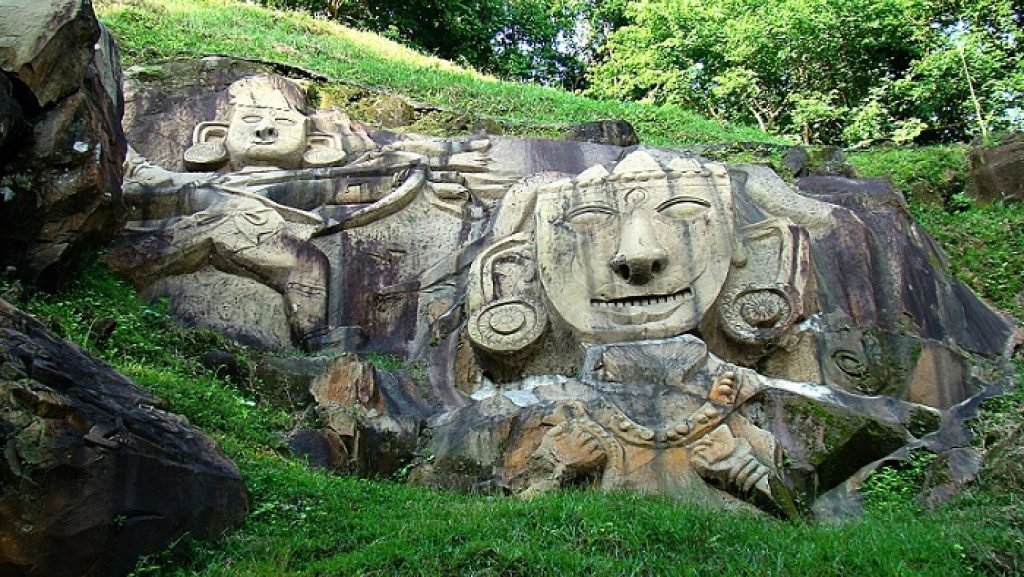
HISTORY
The word Unakoti when split into two leaves us with the words una and koti. In Bengali una means one less and koti is used to refer to a crore. Hence the word Unakoti means one less than a crore and that also addresses the legend of there being so many sculptures that they can be referred to being just one less than a crore. So, it can be said that there are ninety-nine lakh ninety-nine thousand nine hundred and ninety-nine idol like sculptures found here.
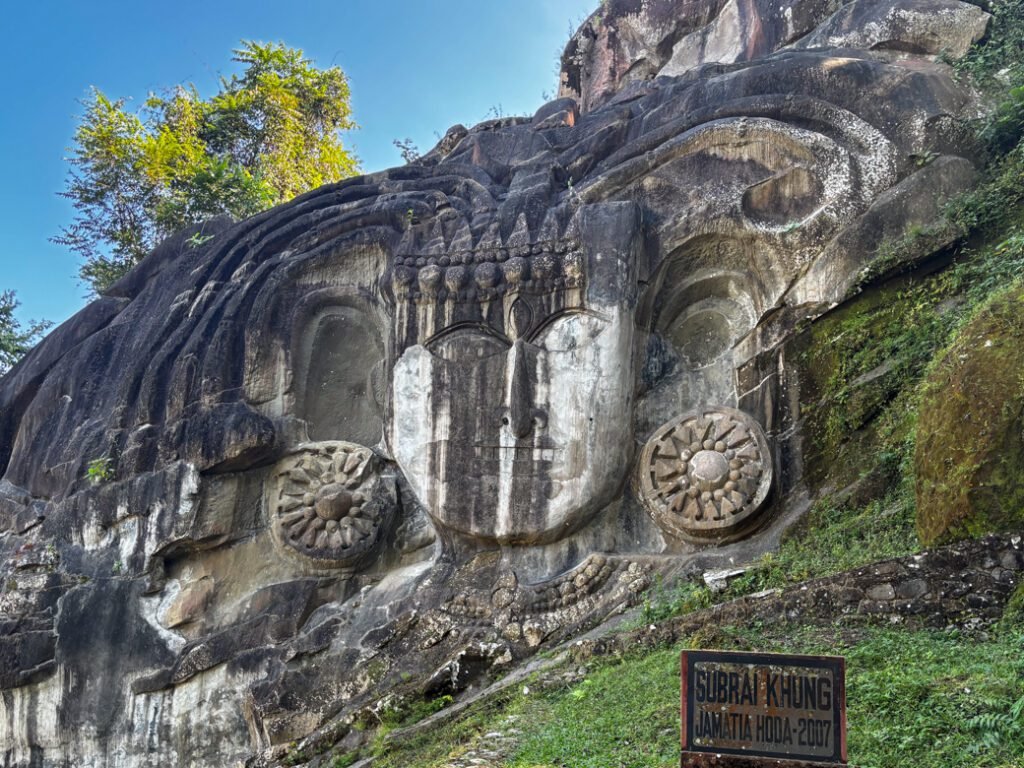
bas-relief, in sculpture, refers to any work where the projection from a supporting background is shallow. These bas relief sculptures are found at Unakoti and are said to date back to the 8th century CE. The rock art at Unakoti may have been supported by the ‘Deb’ generation of Sri Bhumi. Mentions of Unakoti in the writings of A.K. Cahudhuri and Captain Williams are intriguing and tell us about the place in relation to worship of shiva.
Because of the location of these carvings and rapid natural causes like earthquakes they have been subjected to an obvious deterioration but there have been said to be visible changes that considered the neglection and helped in preservation of the sight since its adoption by the Archaeological Survey of India. Inspired by the Angkor Wat temple in Cambodia, Unakoti is also known as the “Angkor Wat of the North-East”. In 2022 December after much deliberation and debate, the Unakoti rock carvings also received the tag of UNESCO world heritage site.
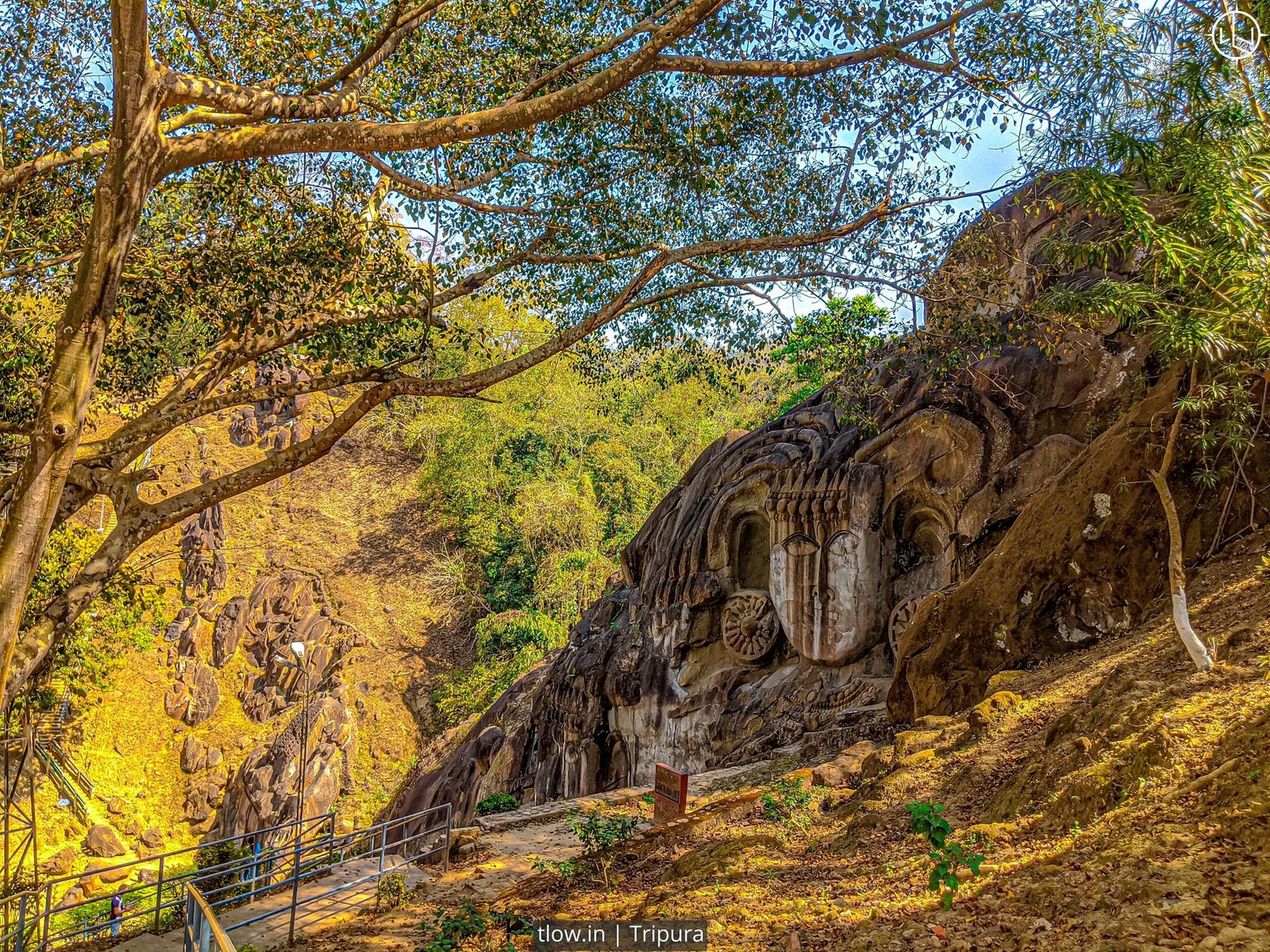
THE LEGEND
There is a very popular tale that talks about lord Shiva’s connection to the Unakoti rock carvings. According to the story once shiva was travelling with his entourage and they were on their way to the city of Kashi (present day Varanasi/Banaras). After a long day they decided to take the nights rest and spend it at Unakoti. The entourage is said to have consisted of one less than a crore gods and goddesses. Shiva had asked them to wake up at dawn so that they could continue their journey. However, when it was time to wake up shiva found all the gods and goddesses asleep. This left shiva infuriated and he cursed them into becoming of stone. This is said to have been the reason behind the naming of Unakoti.
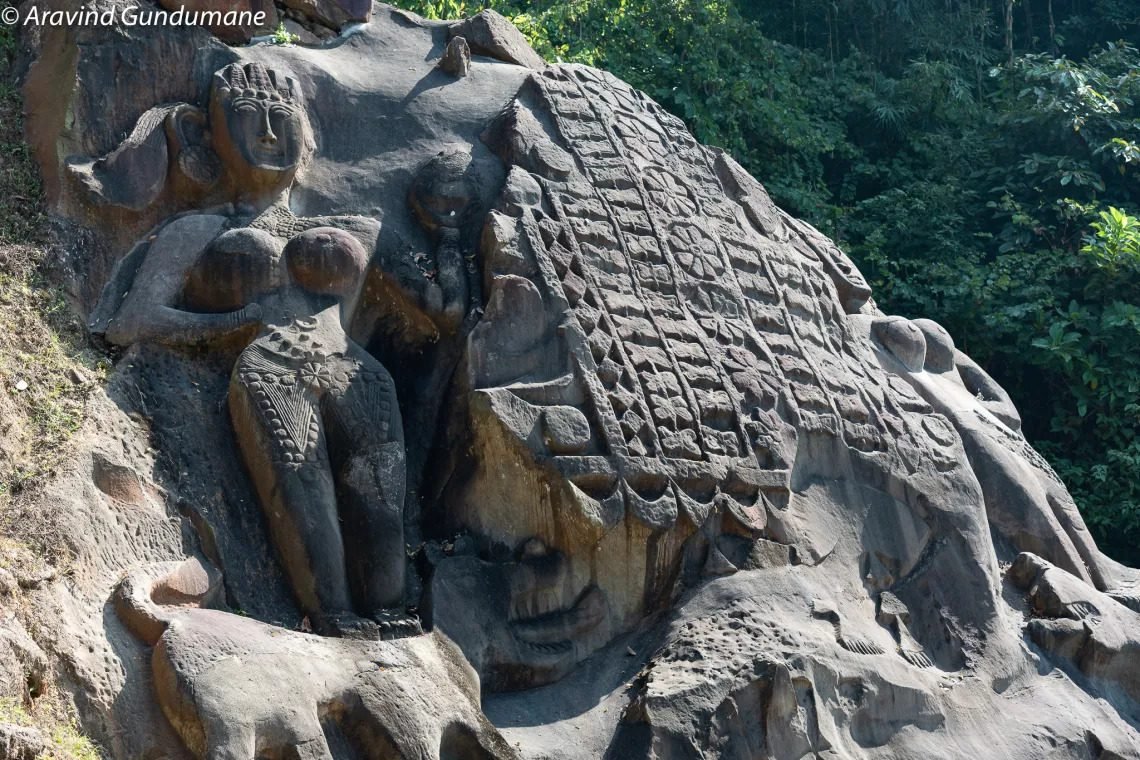
Another legend suggests the involvement of a man named Kallu Kumhar was an artisan. When god Shiva and goddess Parvati were on their way to Kailash they were accompanied by him. Then goddess Parvati has asked him to created one crore sculptures over the night of lord shiva and his fellows to win his favour. Being skilled and talented like the legend says he is said to have finished the work before the morning by falling short of one sculpture.

DESCRIPTION
The sculptures discovered at Unakoti are broadly categorized into two groups according to UNESCO. Group A consists of majestic rock-cut images on the vertical surface of the hill and fallen boulders while Group B has loose sculptures of smaller and medium sizes scattered on the hill. The most prominent and famous sculpture, which often gets used to refer to the place altogether, is that of Unkotiswara Kala Bhairav. This massive statue of Shiva, carved from rock, is approximately 30 feet tall along with the third eye placed vertically on the forehead. The eyes are presented without pupils and the nose is depicted as straight with the mouth shown as a narrow slit and vertical lines to represent teeth. The carvings of his jewellery including the headpiece and earrings is said to have tribal influence. Near the Shiva statue, there are three representations of the Nandi and above the Shiva image on the rock surface, two female figures are visible. Identified as Goddess Durga, the figure standing on the left is atop a lion.

As you go through the location you will discover various different idols and sculptures of shiva. The location is famous for the abundance of huge rock-carved images of Hindu gods like Shiva, Parvati, Ganga, Ganesha and Hirimba . In addition to these larger sculptures, smaller carvings of Shiva heads and shiva lingas are also present on the rocks in abundance. Various scattered stone sculptures of lord Vishnu, Hara-Gauri, Hari-Hara, Narasimha, Ganesha, and Hanuman etc can also be seen in and around the site. The possible influence of Buddhism is also understandable here. There are various depictions of Bodhisattvas, Buddha, and Buddhist motifs. Most of the rock carvings at Unakoti face west and can be found in a picturesque setting with abundant greenery and a stream running through the middle of the hill, flowing from east to west. Three pools are created by the stream as it flows down. These sacred kundas played a significant role in religious activities within Brahmanical Hinduism and are a major feature of the yearly Ashokastami Mela hosted at Unakoti.
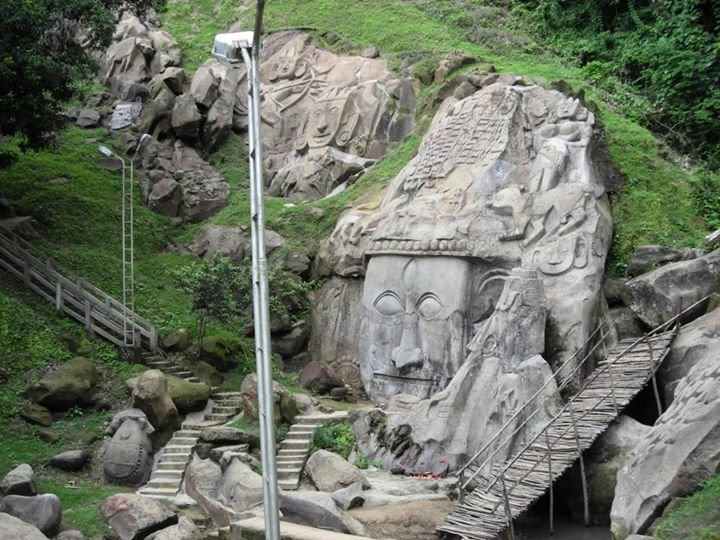
ASHOKASTAMI MELA
This event takes place every year in the Hindu month of Chaitra which falls between March and April and falls on the eighth day of the month. Prayers and offerings are made to Lord Shiva. The main attraction of the festival is a grand procession featuring the idols of the deities, with traditional music, dance and singing. This festival is known to be a sacred pilgrimage for the Shaivites, who believe that Unakoti was once home to thousands of deities. The Ashokashtami Mela is also a cultural event that attracts tourists from around the country.
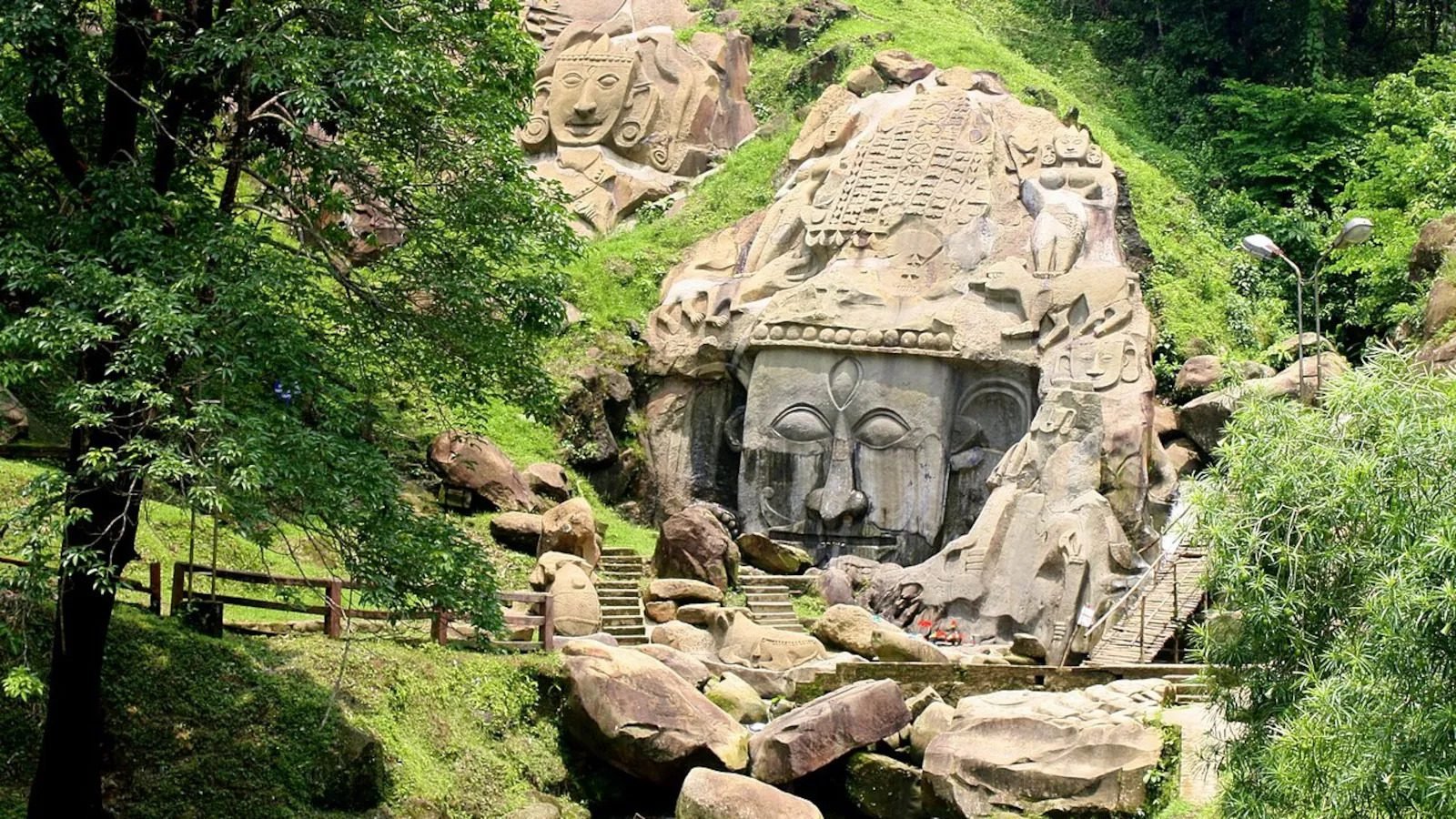
LEGACY
The place not only serves as a representative of Tripura’s beauty to the tourists around the world, it also highlights the footprint of religious practices centuries ago. Getting the tag of UNESCO world heritage site has given Unakoti the late but very well needed recognition a place with such ethereal beauty deserved. It captures the hearts of the people that visit it alike, irrespective of their intentions of the visit, be it a tourist, an archaeology enthusiast, or a devotee.


